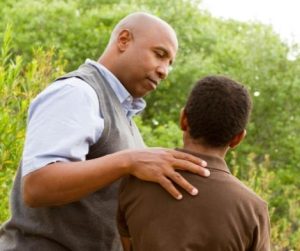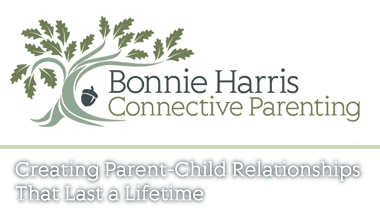 It is not easy to learn your child is being bullied. You are ready to do battle—anything to save your child from the pain and agony of daily terrorizing. Especially if you were bullied as a child. It’s hard enough to watch a sibling use age and power to overcome the wishes of the younger but a school bully, or a controlling friend is quite another thing. High emotional reactions from parents are always understandable but never helpful.
It is not easy to learn your child is being bullied. You are ready to do battle—anything to save your child from the pain and agony of daily terrorizing. Especially if you were bullied as a child. It’s hard enough to watch a sibling use age and power to overcome the wishes of the younger but a school bully, or a controlling friend is quite another thing. High emotional reactions from parents are always understandable but never helpful.
Bullying has likely been going on awhile when most parents learn of it—if they ever do. For the child, being the target of a bully is humiliating and shameful. The target does not want anyone to know. Even the most loving and accepting parent is often the last to find out for fear he may be letting his parents down. After all, to the target, he assumes it must be his fault. He must be weak and ineffective at preventing the bullying.
Therefore it is up to the parent to interpret behavioral signs. Not an easy thing to do. Changes in typical behavior, moodiness, staying alone, loss of appetite or sleep, sudden or more intense rudeness toward siblings or parents are a few behaviors that could signal bullying.
When parents fall into the reactive and protective role assuming the job of shielding their child from danger, the result can be the opposite of what is intended. Children can become dependent on the overprotective parent to step in. However, your child can become more and more of a victim when the skills of standing up for herself are not learned, and her responses to the bully become more and more ineffective.
 The job of parent is to support and guide children through problem situations, not protect them from happening. If you protect and prevent, your child is robbed of the opportunity to learn resilience and gain self-confidence. If there is one attribute to best fight a bully, it is self-confidence. Your job is to remain neutral. Of course, you are helping your child stand up to the bully, but he must be the one to come up with how he will do that.
The job of parent is to support and guide children through problem situations, not protect them from happening. If you protect and prevent, your child is robbed of the opportunity to learn resilience and gain self-confidence. If there is one attribute to best fight a bully, it is self-confidence. Your job is to remain neutral. Of course, you are helping your child stand up to the bully, but he must be the one to come up with how he will do that.
Here are the steps to role play with your child who has been bullied:
1. Maintain connection. This means following the principles of a connected relationship which involve empathy, trust, and balance. If you use punitive and directive measures to correct behavior, your child will not trust you and will likely not engage in the role play.
2. Validate the child’s feelings. Always take what you hear from your child seriously. Let her know you get what she is trying to tell you. Empathize with how she sees the situation even if you think she’s wrong.
3. Ask if your child would do an exercise with you. Once you have connected and your child knows you are not just going to tell her what to do, she will likely be willing. Pick a good time when there are no time constrictions.
4. Set up the role play. Tell your child that you will play the bully. You want her to tell you all about how the bully talks and acts. Ask your child to set up the scene and follow her direction.
5. Give her permission to say or do anything she wants. No one is going to tell her no. She can blow it all out at the bully and no one but you will hear.
6. Either after she has expressed herself or if she is hesitant to get into it:
- Ask: What do you wish you could say or do to the bully?
- Ask: What do you wish would happen?
- Ask: What do you want of the bully?
- Ask: What do you wish the bully knew about you?
- Ask: What do you want to ask the bully to do now?
7. Acknowledge the emotions you see in your child. Normalize them and support them.
8. Suggest an actual situation of confrontation.
- Ask: What would be something you can say to the bully when a situation occurs? Would you like to have a few phrases in your back pocket?
- Work with your child to come up with some ideas. Be sure and ask if she would like your suggestions rather than telling her what she should say.
- Ask: How would you feel if you said that? What do you think would happen if you said that? Keep working until there is something your child feels good about.
After doing this exercise, your child is already empowered. He may never follow through with any of the ideas you have come up with. But he knows he has it in him because you have given him the opportunity to see what he is capable of. He knows he could do it if he chose. He may not choose. That’s up to him.
 Of course, there are times when you must step in, go to the teacher or principal or another parent, and come up with a plan. If this seems necessary, first ask your child if she would like your help in doing so. Discuss with her what your plan is. If she adamantly says no, do not go forward. Continue checking in with her and role playing.
Of course, there are times when you must step in, go to the teacher or principal or another parent, and come up with a plan. If this seems necessary, first ask your child if she would like your help in doing so. Discuss with her what your plan is. If she adamantly says no, do not go forward. Continue checking in with her and role playing.
There may come a time when the situation is bad enough that you must get involved against your child’s wishes. If so, tell him it is your job to keep him safe. You will be talking with his teacher. Tell him, don’t ask. Then ask him what he absolutely does not want you to say. This way, he has some control in a situation he does not want to happen.
Remember your ultimate job is to empower your children in self-confidence and personal agency so they can feel purpose and resilience in their capability to control their own lives. This is done with a gradual letting go of solving their problems and directing them to do as you say from toddler to teen.
Related Articles:
Building Resilience from the Ground Up
Can we bully our kids out of bullying?







